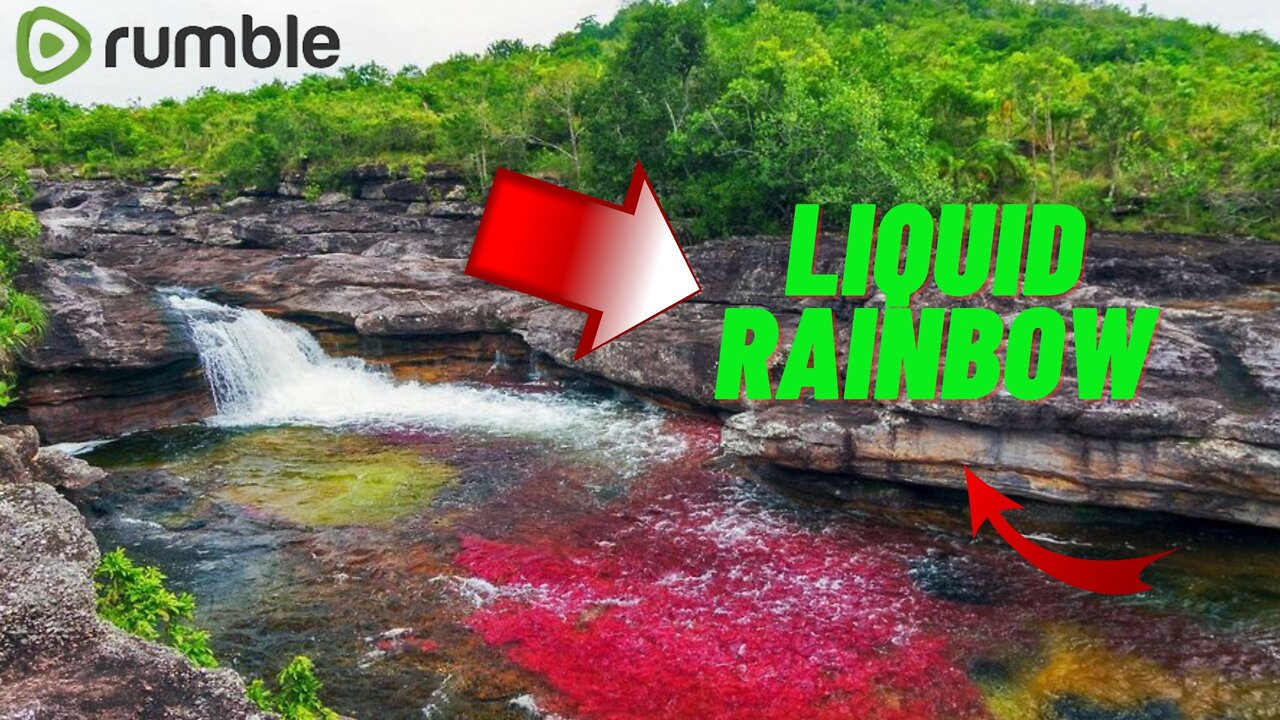Premium Only Content

🌈Liquid rainbow🌈
Liquid rainbow'
Visit Caño Cristales during the wet or dry seasons in Colombia, and you'd be forgiven for wondering what all the fuss is about.
However, travel there from July to October, the moderate months between the extremes of the wet and dry seasons, and you'll witness one of Mother Nature's crowning glories.
The 62.1-mile-long river is in Colombia's Serranía de la Macarena national park, in the province of Meta, and is known as the "River of Five Colors."
This "liquid rainbow" -- as it is also called -- is one of the South American
country's most spectacular natural wonders, thanks to its vivid colors.
The bed of the river sports bright red, yellow, green, blue and black for the
few months that conditions are right. Although the colors can be viewed from as early as mid-May and sometimes into December, they are brightest during June and November.
The colors are produced during the reproductive process of the aquatic plants in the river, which are called Macarenia clavigera, a species of the riverweed family Podostemaceae.
During the wet season, the river runs fast and high, meaning the sun cannot hit the riverbed's plants. During the dry season, there is not enough water to support the plants. The seasons rarely vary, so visitors wanting to catch sight of the spectacle have to head to the national park during those months that the bloom is most visible.
The phenomenon happens nowhere else in the world. The area itself is a hotspot for biodiversity, where the Andes mountains and the Amazon and Orinoco basins converge -- and is home to many endemic species.
Prior to the pandemic, thousands of tourists flocked to see the spectacle every year, which had raised concerns amongst scientists that the river may be threatened by overtourism.
Flavia Santoro, head of ProColombia, the country's tourism board, says that measures had to be taken to protect the area -- so large was the influx of visitors. The agency "severely restricted development" of tourism infrastructure in La Macarena, the nearest small town to the national park, as well as capping the number of tourists allowed in at 200 per day.
There were so many tourists visiting the region that in spite of the cap environmental authorities closed the destination in December 2019 to protect the river. The closure was then extended due to the pandemic.
For 18 months, until its reopening in June this year, Caño Cristales did not receive one single visitor.
The effect, biologists say, has been been beneficial for the region.
Faber Ramos, a park ranger and eco-tourism coordinator in the Colombian national park system's Orinoco region, says the pandemic has had a "positive effect" on the river's health and that there was now a greater presence of fauna.
📌Credits:Lucy Sherriff 🎤Research: Vitor hugo Lizarde Leonarde
🔴📣SHOW- The channel was created to promote texts and sounds for us to think a little about life and as we can be very happy with what little we have, did you like it, leave your LIKE, your comment as soon as possible we will reply, thank you. If any writer,record label, artist or photographer has a problem with any music upload or video, please contact us and we will remove your work immediately. Thank you!
🔴📣 We strive to find the best and most enjoyable text and music for
you! We hope to make your days more beautiful with texts and music that make you think and music to relax! Text, love and music. I'm also a writer, I'm working on this project!
🔴📣 If you have any copyright issues or questions, please don't let me know.
report, please take the time to contact us via email and we will respond within 48 hours 🔴📣 vitorleonardi99@gmail.com 🔴📣
#colombia, #liquidrainbow, #tourism, #nature, #water, #rainbow, #land,
#canocristales, # today, #living, #airport, #bogota, #trails, #study,
#school, #teacher , #dark, #channel, #like, #share, #knowledge,
-
 47:29
47:29
Man in America
20 hours agoIT DOESN'T ADD UP: The Trans Shooter's Story Is FULL of Holes
74.7K99 -
 LIVE
LIVE
FyrBorne
10 hours ago🔴Warzone M&K Sniping: Through the Fyr And Flames (Of SBMM)
130 watching -
 LIVE
LIVE
Dorian_D
1 day ago🔴 Dorian's First-Time Mega Man Legends 2 Playthrough: Full Gameplay Adventure!
69 watching -
 41:08
41:08
The Finance Hub
20 hours ago $0.12 earnedBREAKING: MELANIA TRUMP JUST DROPPED A MAJOR BOMBSHELL!!!
1393 -
 16:43
16:43
RTT: Guns & Gear
1 day ago $0.10 earnedBest Day/Night Vision Scope for The Money? DNT Optics ZULUS HD V2
1921 -
 2:12
2:12
The Quiet Part
16 hours agoCensored Everywhere Else: What’s Really Happening With MAID
124 -
 45:22
45:22
Hearts of Oak on DailyClout
16 hours ago"Christina Bobb - Defiant: Inside the Mar-a-Lago Raid and Lawfare Battles"
1721 -
 1:00:00
1:00:00
BEK TV
1 day agoOpen Range
1.06K -
 17:54
17:54
Dr Disrespect
1 day agoDR DISRESPECT vs VAN DAMME in Hitman 3
120K15 -
 10:40
10:40
Nikko Ortiz
18 hours agoMilitary's Best Fights And Fails
112K15